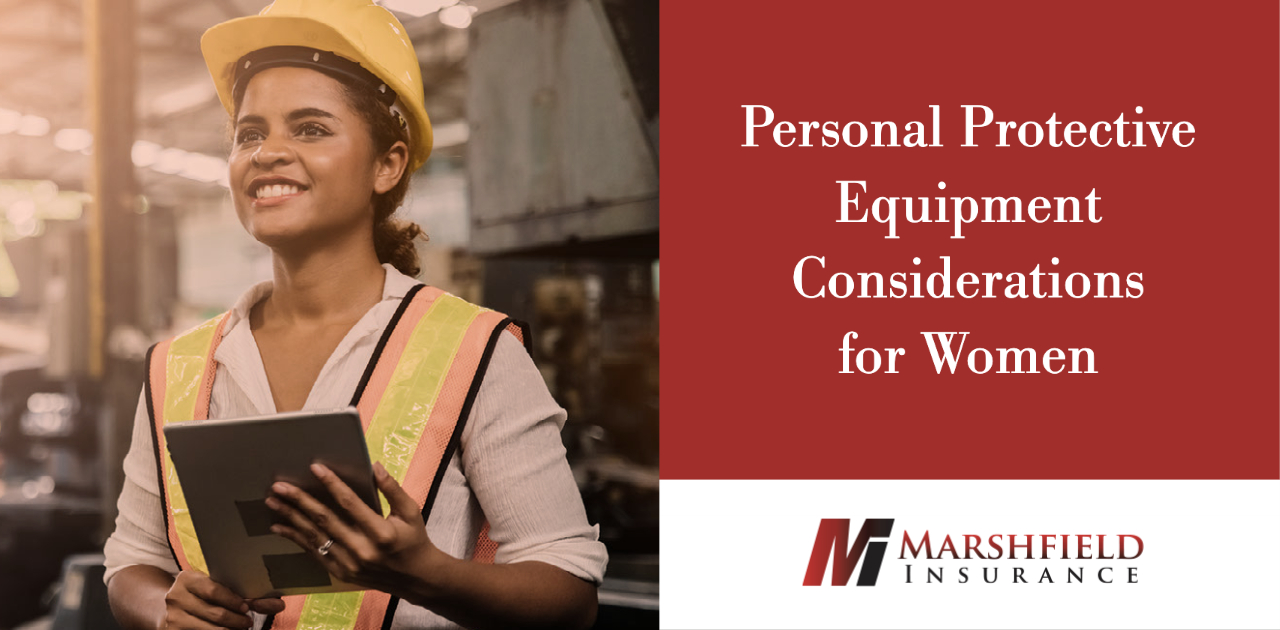- Amputations and fatalities—If high-visibility clothing and safety gloves fit women poorly—particularly if they are too loose—they could be more likely to get caught in worksite machinery and tools, potentially resulting in amputations or (in severe cases) fatalities.
- Slips and trips—In addition to ill-fitted safety footwear (e.g., steel-toed boots) possibly causing women’s feet to blister, it’s important to note that men’s shoes are often heavier than those of the opposite sex. As such, wearing men’s safety footwear and carrying extra weight on their feet could increase women’s occupational slip and trip exposures.
- Falls from height—Poorly fitting PPE utilized when working from height, such as personal fall arrest systems, may not distribute weight evenly across women’s bodies, primarily in the waist and hip areas. This could render such systems ineffective, therefore elevating the likelihood of women falling from height and experiencing serious head and neck injuries on the job.
- Respiratory complications—If respirators don’t fit women correctly, they could restrict access to clean air and expose these workers to any respiratory irritants present at the worksite (e.g., hazardous chemicals and dust). This could lead to long-term respiratory complications, such as occupational asthma or lung cancer.
- Maintain OSHA compliance. Current OSHA guidance states that PPE utilized by women “should be based upon female anthropometric (body measurement) data” and “PPE must fit properly so that it can effectively protect the employee from the hazard for which it was designed.” Additionally, OSHA is in the process of issuing a proposed rule that may result in more robust standards for employers to ensure all workers receive adequately fitted PPE. With this in mind, construction employers should regularly assess their PPE policies and procedures and revise them as needed to comply with the latest OSHA guidelines and requirements.
- Be proactive. Employers shouldn’t wait for their workers to make complaints regarding ill-fitted PPE or related accidents to occur. Rather, they should focus on preventing these problems before they can start by proactively purchasing PPE in size ranges that accommodate women. They can do so by working with trusted suppliers and manufacturers that provide PPE in a wide selection of sizes catered to varying demographics. Employers should also make it a priority to always keep PPE of diverse size ranges available on-site, provide workers with direct access to such equipment, facilitate routine PPE fit-testing, and conduct comprehensive training on how to properly use this equipment and determine whether it fits correctly.
- Promote inclusivity. In order to uphold a safe work environment, construction employers should go beyond simply purchasing PPE tailored for women. Inclusivity entails recognizing that all workers’ bodies are unique, and their specific PPE needs may vary based on a variety of factors, including sex, height, weight, physical abilities and even cultural differences. This means that, in addition to providing PPE made for women, employers should ensure they make the following PPE options available:
- Maternity PPE catered to pregnant workers
- High-visibility clothing for workers of all heights
- Safety gloves and footwear for workers who require extra small and extra large sizes
- PPE is tailored to workers who use wheelchairs or have limb differences
- PPE for workers with particular cultural or religious needs (e.g., equipment that coordinates with a Muslim woman’s hijab)

